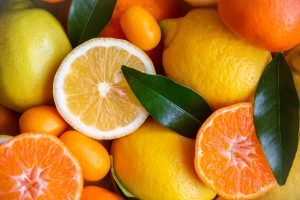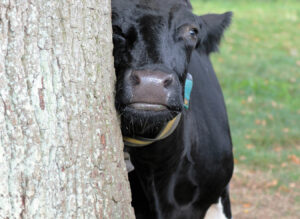Ishaya U. Gadzama & Fernando Díaz
At calving, calcium requirements are quadrupled, which results in cows experiencing variable degrees of subclinical to clinical hypocalcemia. To improve calcium mobilization, Goff and Horst (1997) suggested to generate a light metabolic acidosis by modifying the equilibrium between anions and cations (Na+K)-(Cl+S) in the diet. Feeding polyhalite mineral as an acidogenic ingredient has been proposed to reduce urine pH in close-up dairy cows.
Polyhalite is a natural mineral formed where sea water has been concentrated and exposed to prolonged evaporation. Polyhalite in Greek means “many salts”, and is a hydrated sulfate of potassium, calcium, and magnesium. Polyhalite contains four important minerals:
- 48% SO3
- 17% CaO
- 14% K2O
- 6% MgO
Ferreira et al. (2019) conducted an experiment at Virginia Tech Dairy Complex, Blacksburg, USA, to investigate the effects of feeding polyhalite mineral as an acidogenic product in close-up diets of dairy cows (35 Holsteins and 10 Jerseys). During the far-off period, cows were housed in an open lot and fed diets without the acidogenic ingredient and grass hay ad libitum. Thereafter, at 21 days before calving, cows were transferred to a close-up group and fed diets which including 48% corn silage, 25% grass hay, and 27% pelleted concentrate on dry matter (DM) basis. Polyhalite product in granular, free-flowing form was added to the concentrate before pelleting at the rate of 129 kg per ton. Thus, close-up cows received about 500 g of polyhalite per day.
Urine pH of the far-off cows at 21 days before calving was 8.26, and they were reduced during the close-up period to 5.18, 5.12 and 5.15 at −14, −7 and 0 days before calving, respectively. Interestingly, the authors observed that the estimated dietary cation and anion difference (DCAD) of the close-up ration was lower (–249 mEq kg−1 DM) than the targeted (−180 mEq kg−1 DM) which would explain the very low urine pH values. The estimated DCAD in corn silage, grass hay, and the concentrate included in the close-up diet was 144, 339, – 1499 mEq kg−1 DM.
This study shows that polyhalite could effectively induce metabolic acidosis in close-up dairy cows. More research is needed to evaluate the effect of polyhalite on intake and calcium metabolism at the onset of lactation.
References
- Goff, J.P. and R.J. Horst. 1997. Effect of dietary potassium and sodium, but no calcium, on the incidence of milk fever in dairy cows. Journal of Dairy Science: 80:176.
- Ferreira, G., Teets, C.L. and Meakin, R.J. 2019. Use of Polyhalite Mineral as an Acidogenic Ingredient for Prepartum Diets of Non-lactating Dairy Cows. Canadian Journal of Animal Science, 99: 962 – 965.
© 2020 Dairy Knowledge Center, LLC. All Rights Reserved.






